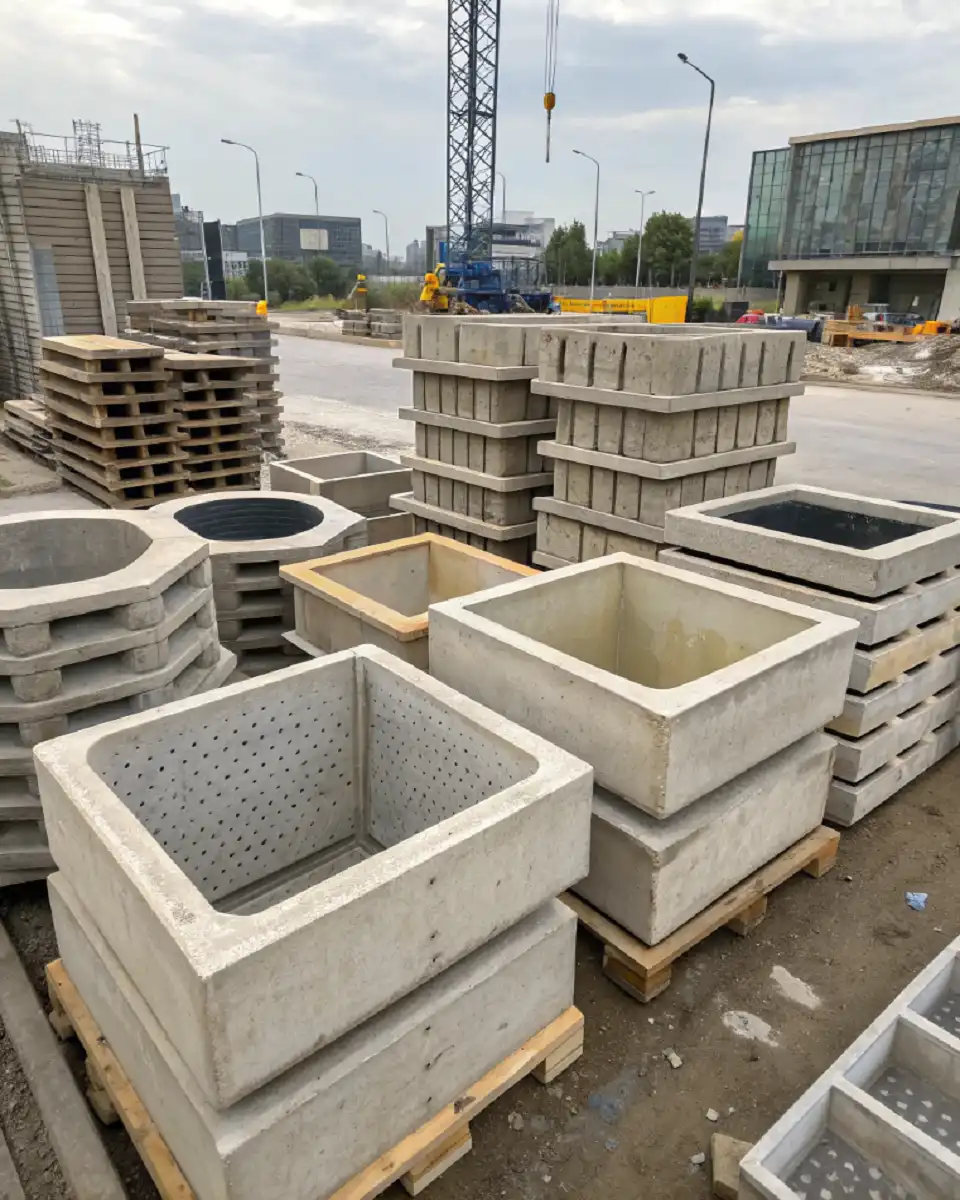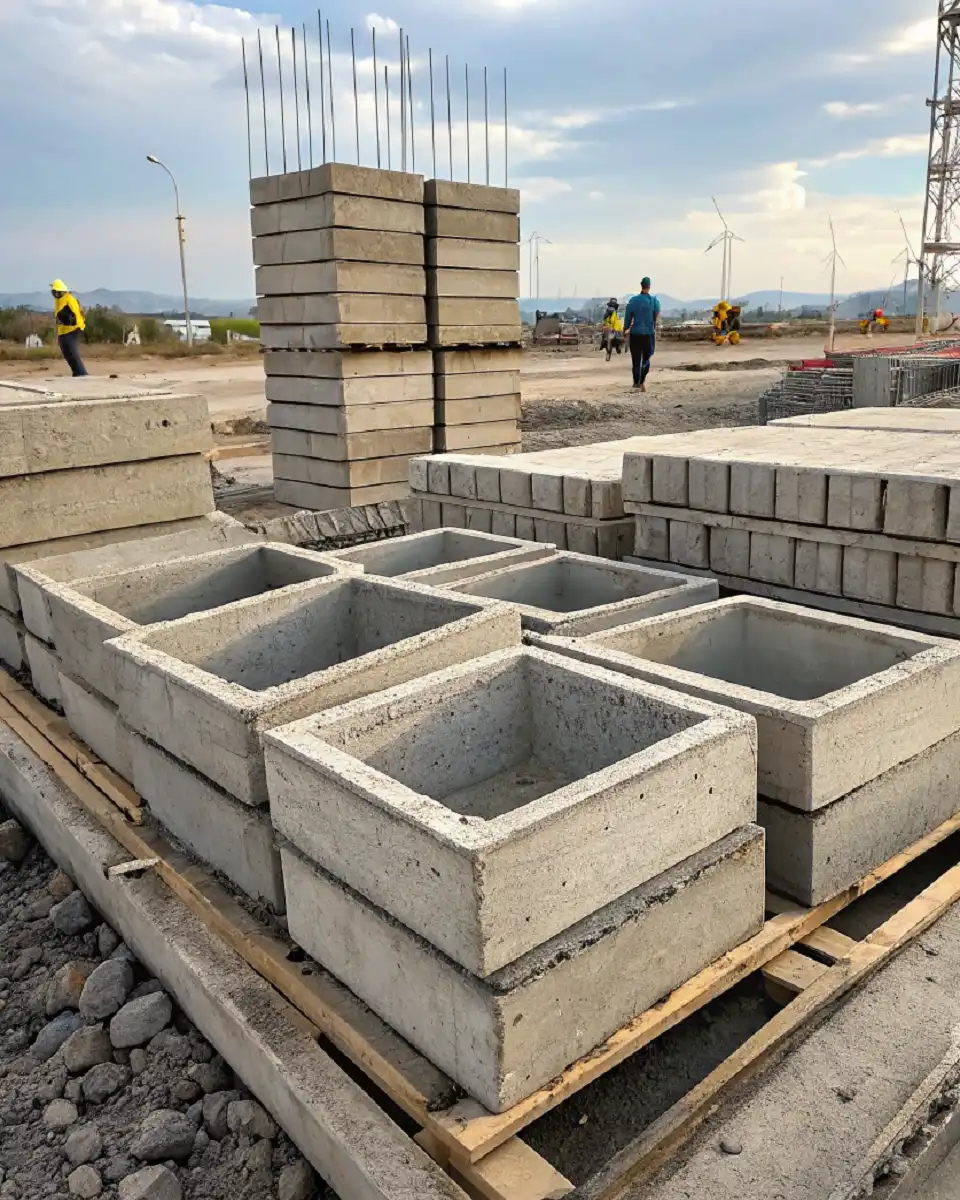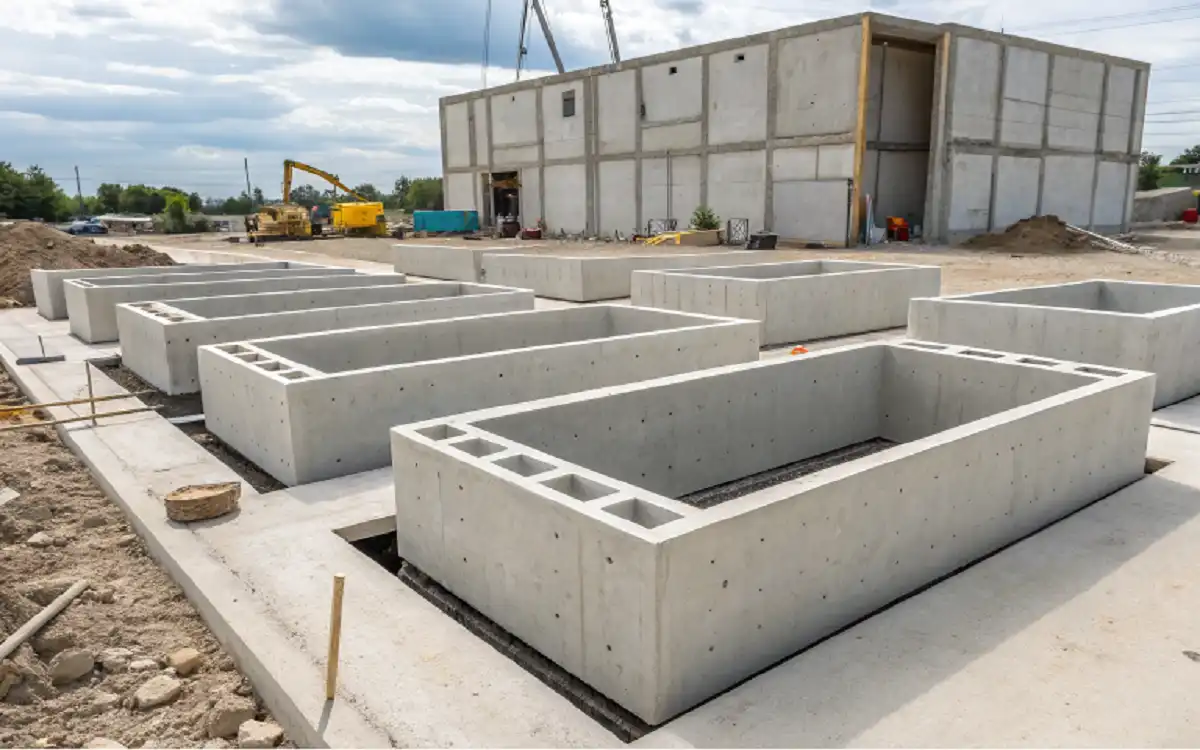Introduction
In the construction industry, the use of concrete forms especially in the precast concrete sector, is critical. The year 2025 is just around the corner, and because of the fast advancement in technologies, concrete forms technology is rapidly changing.
This is evident in the increasing demand of urban developments, as well as incorporating the need for innovative and sustainable solutions.
Concrete is also becoming a preferred material amidst the developments because of the strength, durability, and the essence that is adds in construction projects, ranging from small residential buildings to massive infrastructures.
In this article, concrete forms that are shaping the future of precast concrete are critically analyzed. The key focus are the formworks and the emerging trends, innovations, and applications that will serve as the vision for the industry.

The Growing Importance of Precast Concrete
The production of concrete components in a controlled environment, followed by their quick assembly at a construction site, is termed precast concrete.
The precast method is an improvement from traditional onsite concrete pouring, and serves as one of the fastest growing methods in construction.
The CAGR of the worldwide precast concrete market, which was 150.2 billion in 2025 is projected to reach 247.5 billion by 2035.
Which now encompasses the strongest reasons for the growth:
- Decreased construction periods because of offsite completion
- Enhanced quality control with greater structural reliability
- Deworsened construction site disturbances and lower overall environmental effects
- Rising demand for high-density, low-cost residential units
- Increased global infrastructure and smart city initiatives
Concrete forms technology impacts the rate of growth because of the way it impacts the speed and precision at which its elements are produced.
Advancement and Evolution of Concrete Forms
2025 will be the first year with smart concrete forms integrated with IoT. These forms use real-time data to monitor temperature, moisture, and stress levels when concrete is curing.
They allow construction operators to have foresight over the issues that are bound to occur with precast components and offer a way to plan repairs of a building to save resources.
3D Printing In Concrete Form Construction
The advancement of technology has brought about new techniques, including 3D printing, which is now being incorporated in construction formworks.
The ability to 3D print open new avenues that allow concrete forms to have unique architectural elements, including other unique shapes, which would have previously either needed excessive efforts to achieve, or,not have been feasible.
This phenomenon reduces material waste, speeds up production cycles, and provides greater creative latitude in designing precast components.
Moreover, with the increase in environmental sustainability, most construction projects would be focusing on the implementation of modular and reusable formwork systems, which cuts reusable single-use form materials.
These form systems can be folded and reconstructed to fit different precast forms which reduces material waste greatly, minimizes production costs and the environmental footprint of precast concrete systems.
The Process of Form Construction in the Production of Precast Concrete
The forming,shaping and curing of concrete components relies on concrete forms to a greater extent. Their presence and esthetics influence the overall output of the concrete in the following aspects.
- Accuracy and uniformity: In a factory system with ample concrete forms, each component is filled in. The forms and systems greatly reduce the variation in the construction site concrete pours, therefore increasing overall output.
- Increased efficiency: Concrete filled elements in forms can be easily reassembled and placed on construction sites, which reduces the overall time of construction needed therefore increasing return of investments on the project.
- Improved Safety: Offsite fabrication minimizes safety risks by decreasing the number of workers on the construction site as well as exposure to hazardous sites and environments.
- Cost Savings: Although there is an investment in the initial production of the above-mentioned forms, their reusability and quicker onsite tasks reduce overall costs per linear foot of construction.
- Aesthetic Flexibility: Newer forms have the ability to be cast to complex shapes allowing sculptural as well as integrated utility pathways, utility space enhancements, activated expressive systems, and thus allowing expressive architecture.

Concrete Forms Driving Sustainability
Sustainability is a key element affecting precast concrete trends in 2025. Concrete forms enables to support sustainability objectives in a number of ways:
- Concrete waste forms can be designed to be optimal in volume and shape to reduce waste.
- Indirect forms enable integration of insulation layers and sustainable concrete mixtures like carbon-sequestering concrete.
- Managed forms usage within factories minimizes site disturbance and onsite emissions from concrete mixing and curing.
- Lowered material and energy expenditures come from automated systems of re-usable forms.
Such benefits of sustainability are in line with countries and green building certification compliance around the world.
Impact on Residential and Infrastructure Projects
In terms of adopting ready-mixed concrete other than efficiency of concrete forms, the residential sector seems to be the best example.
For concrete forms enable concrete to mid-rise and high-rise buildings at a faster and more consistent quality than before which forms endless opportunities. Concrete forms walls, slabs, staircases
And other components and structures such concrete bridges, highways and public transport systems have also shifted to using precast concrete slabs.
For example, in India, the Ministry of Road Transport and Highways has plans to increase the mandatory use of precast concrete in road projects to cut mpollution, costs and delays, and the other benefits of which range from 25% to 75-80% These include highway, bridge, and public transport systems.
Practical Considerations: Using Concrete Forms Efficiently
The success of any precast concrete project depends on the design and forms. They also use efficiency. Key factors include:
| Factor | Description | Impact |
| Material Durability | High-quality steel or composite forms last longer | Reduces replacement needs, lowers costs |
| Design Flexibility | Modular or adjustable forms adapt to different specs | Speeds up production and improves versatility |
| Ease of Handling | Lightweight or ergonomic shapes ease movement | Enhances safety and reduces labor effort |
| Surface Texture Options | Custom form liners for finishes | Adds aesthetic value without extra labor |
| Reusability | Number of cycles before forms degrade | Improves cost-effectiveness per linear foot |
| Compatibility with Automation | Forms designed for robotic pouring and monitoring | Increases precast quality and reduces errors |
To demonstrate the impact of concrete form selection on the outcome of a project, this table features practical insights to illustrate the balance each project in and of itself presents.

The Influence of Digital Technologies
The advancement of concrete forms and construction management relates directly to Innovation Digital Technologies, and to dissimilar forms of Construction Information Modeling and contemporary drafting tools that allow:
- Creation of fully developed 3D forms and precast components with the requisite details
- Enhanced and Smooth Integration and coordination of plans with the actual physical cross-section’s construction
- Monitoring and management of the cycles of servicing and maintenance of forms
- Integration of other components and appliances for automated Quality Control (QC) processes
The use of digital technologies enables the entire value chain of the concrete precast industry starting from designing to transporting and supplying it to the consumers to enhance the productivity of the construction industry while minimizing the chances of errors.
Mercy West Project
The Mercy West residential development is one of the vivid examples that demonstrates the effect of concrete forms to large housing schemes.
The use of advanced concrete forms and modular precast technologies helped the project to achieve 30 percent reduction in construction period and in the reduction of construction waste.
Such advanced concrete forms of construction having the utmost precision provide the entire complex with structural integrity and with optimal structural alignment of dissimilar elements, and exemplifies the advantages associated with modern practices of precast construction.
Conclusion
At the center of the precast concrete industry’s exciting future are concrete forms. The construction industry is experiencing a real transformation unlocking new methods like smart technology, 3D printing, modularity, and sustainability.
These methods make construction faster, safer, and greener. The urbanization and infrastructure development across the globe is a valuable precast concrete market’s growth, which underlines the importance of concrete forms in meeting future requirements.
For Repair and Services
1924 W Edward Ln, Milwaukee, WI 53209, United States
Phone: +14142855933
Email: [email protected]



Leave a Reply